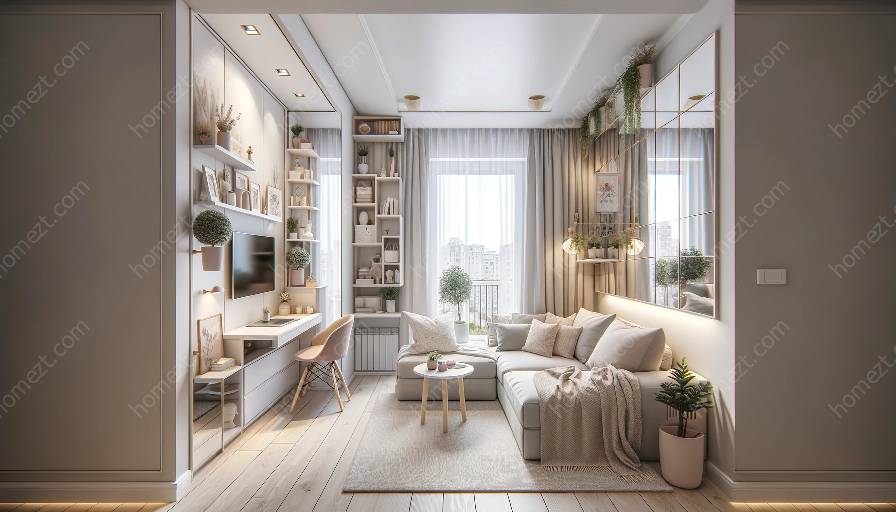Sustainable design practices for small interiors focus on creating functional and aesthetically pleasing spaces while minimizing environmental impact. This topic cluster covers various aspects of sustainable design, including tips for utilizing small spaces and decorating in an eco-friendly way. By incorporating sustainable practices, you can transform your small interior into a vibrant and environmentally responsible living or working space.
Utilizing Small Spaces
When it comes to small interiors, maximizing space is essential. Sustainable design practices can help you make the most of limited square footage while minimizing waste and energy consumption.
1. Multifunctional Furniture
Invest in furniture pieces that serve multiple purposes, such as a sofa that can also function as a bed, or a coffee table with built-in storage compartments. This approach not only saves space but also reduces the need for additional furniture.
2. Vertical Storage Solutions
Utilize vertical space by incorporating shelves, wall-mounted organizers, and hanging racks. This not only adds storage capacity but also creates visual interest in the room.
3. Integrated Appliances
Opt for integrated appliances in the kitchen and other functional areas to maintain a streamlined and cohesive look. This not only saves space but also reduces visual clutter.
4. Smart Lighting Design
Utilize natural light as much as possible and incorporate energy-efficient lighting solutions such as LED bulbs to reduce electricity consumption.
5. Flexible Partitioning
Consider using sliding doors, folding screens, or curtains to divide spaces as needed. This provides flexibility while optimizing the use of available floor area.
Decorating Sustainably
Decorating a small interior sustainably involves choosing eco-friendly materials, incorporating biophilic design elements, and minimizing waste. These practices enable you to create a visually appealing and environmentally conscious living or working environment.
1. Eco-Friendly Materials
Opt for sustainable materials such as reclaimed wood, bamboo, cork, and recycled metal for furniture, flooring, and decor. These materials not only reduce environmental impact but also add unique character to the space.
2. Indoor Plants
Integrate indoor plants to improve air quality and create a connection to nature within the small interior. Select low-maintenance plant varieties to add a touch of greenery without requiring extensive care.
3. Upcycling and Repurposing
Embrace upcycling and repurposing by giving new life to old or discarded items. Consider transforming vintage furniture, salvaged fixtures, or reclaimed materials into functional and stylish elements for the interior.
4. Minimalist Approach
Adopting a minimalist approach to decorating ensures that the small interior remains uncluttered and visually appealing. Choose decor items thoughtfully and prioritize essential pieces to maintain a clean and harmonious aesthetic.
5. Energy-Efficient Fixtures
Install energy-efficient fixtures such as low-flow faucets, smart thermostats, and eco-friendly appliances to reduce water and energy consumption within the small interior.
Conclusion
Sustainable design practices for small interiors offer numerous benefits, from optimizing space utilization to reducing environmental impact. By incorporating the tips and strategies outlined in this topic cluster, you can transform your small interior into a functional, visually appealing, and eco-friendly space. Whether it's a compact apartment, a tiny house, or a small office, sustainable design principles can enhance the quality of life within these intimate settings while promoting environmental sustainability.






































